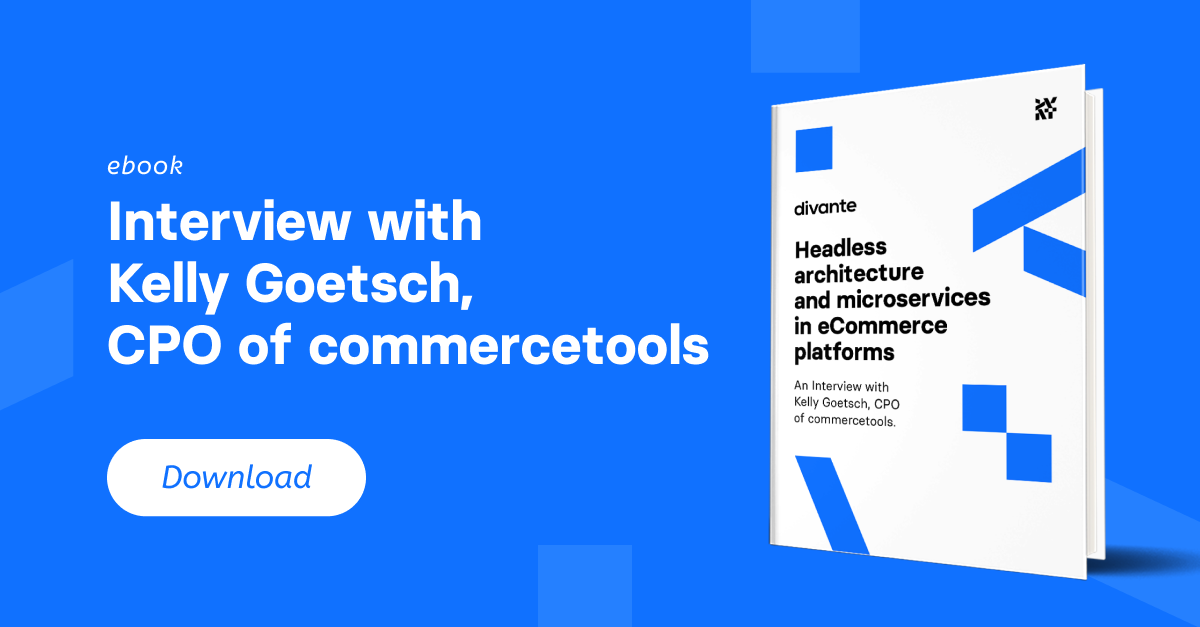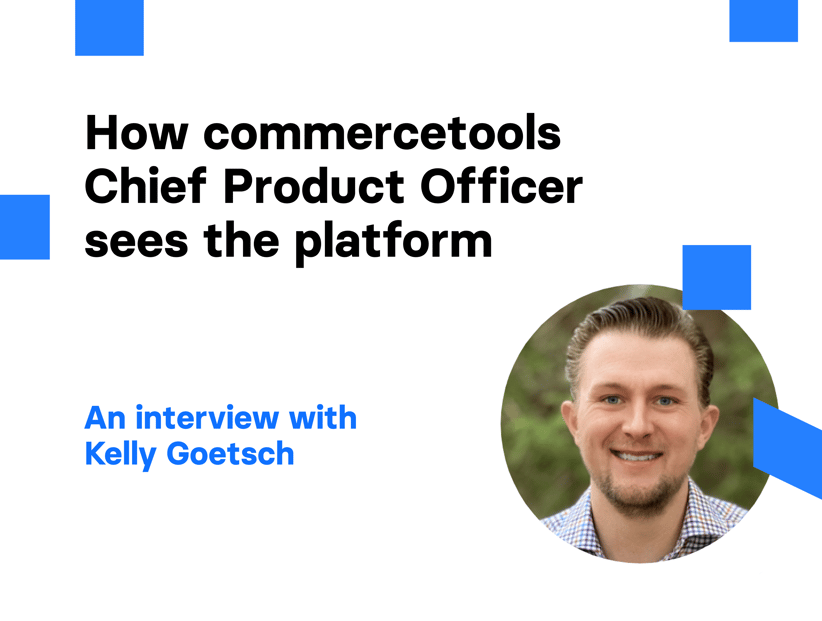A short while ago, we held a webinar interview with commercetools CPO Kelly Goetsch. Previously of Oracle and ATG, and O’Reilly author of four books on topics ranging from microservices to GraphQL, Kelly is also co-founder of the MACH Alliance and co-host of the CommerceTomorrow podcast.
In a nutshell, Kelly Goetsch is one of the most respected voices in eCommerce and he’s right at the center of two of the most important dynamic events in 2020: the rise of commercetools to a Leader in the Gartner Magic Quadrant, and the launch of MACH Alliance that brings together like-minded eCommerce operates that share a vision for the technology of the future.
Our live webinar was a huge success, so we’ve taken our interview with Kelly and chosen just a few of the critical insights from the full conversation for you to enjoy.
commercetools has been named as a leader in the Gartner Magic Quadrant for Digital Commerce and is one of the most talked about technologies around. Here's why: Visit the commercetools website Find out more about our Divante as a commercetools solution partner
Architecture driven concept
Piotr Karwatka: There is the opinion that eCommerce platforms are moving from being feature-driven to architecture-driven. Do you agree with that?
Kelly Goetsch: “Back in the day, if you were an enterprise and you wanted to buy software, you’d have to call up Oracle or IBM or SAP and go through a very lengthy evaluation process. You’d then get the software and have to find someone to host and manage it. There was a lot of work and you had to pay up front. It was a big deal to go out and procure and spend three to five million dollars buying software that does something.
“Today, the cloud has completely changed that because you have vendors like commercetools. You have search vendors. You have OMS vendors. You have a few of these vendors doing different, sometimes tiny things. If you’re a retailer or an enterprise and you want a new function that does something, you go on the open market, look at the marketplaces on Google Cloud Platform or Amazon Web Services, pick something, and try it. All of these have API interfaces and all of them will typically provide a free demo. Now, with commerce, there is this great unbundling. You can use top-notch tools which are winners in their category for the exact tasks you have.”
An interview with commercetools about the power of the platform
Piotr Karwatka: Why do companies choose commercetools as an eCommerce platform and what makes it a unique piece of the puzzle in this whole architecture?
Kelly Goetsch: “They choose commercetools because we are the market leader in headless commerce. We actually invented it. Dirk Hoerig, our founder and CEO, invented headless commerce in 2013. That was a brand-new category at the time. Our architecture means we are multi-tenant, which is great because we’re constantly pushing new updates to production. We release to production at least four times a day, and we can do it even faster than that if we need to. We’re constantly publishing new functionality.
“Everyone’s running the exact same version of our software. We guarantee backward compatibility. We have a great extensions framework, and we’re fully SAS, so there’s nothing you ever need to install or run. Our commerce terms are also very friendly.
“So, there are a lot of reasons but it’s primarily an architecture approach. We are a box of commerce tools that you can consume à la carte in the same way that you have a big toolbox of APIs when you log into AWS or GCP or Azure that you can choose from and bake into your applications. We do the same thing but for commerce.”
Building with modern APIs
Piotr Karwatka: Legacy monolithic platforms APIs are not designed for scalability and are always right for the modern web and for building a headless frontend. At Vue Storefront, we have the same challenges. Integrating some platforms is much easier than others. What was the biggest challenge designing this great API and how did you design it?
Kelly Goetsch: “The biggest challenge I see with people designing API is they write their code, and then they expose it through an API. That’s the exact opposite of what we do at commercetools. We have always been API-first, so we design the API from the perspective of developers, thinking how they want to interact with it and what is their optimal experience. Then we write this back and implement the code to support that API. If you do it the other way around, you end up with all sorts of weird things in your API’s and it just doesn’t work very well.”
How to customize a cloud-based platform
Piotr Karwatka: commercetools is an API-first cloud-based platform. I’ve heard a lot of stories about how easy it is to work with, but how can you customize a cloud-based platform?
Kelly Goetsch: “You can change the data model on the fly. That’s pretty straightforward; for example, if you’re selling shoes, you can add a ‘shoe size’ property. You can add custom types and custom objects, so the data model is completely flexible. That’s because we’re built on top of MongoDB behind the scenes; we have a document database which doesn’t have the rigid schema like you’d find with a traditional relational database. You can add and change whatever you want there.
“We also event data out. With traditional platforms, you’d use JMS or some point-to-point messaging, at very low volume. What we do at commercetools is allowing you to specify the queue that you would like us to dump the messages in and then you can specify the types of messages you’d like us to send.
“We might not have every single feature. We’re probably 90% feature-complete compared to other platforms but an example of that is we don’t automatically send out a ‘Thank You’ email after an order is placed. That’s because not everybody wants that functionality. What we do instead is event out an event that lets people know that a customer placed an order and you can write a Lambda function or custom application to grab that event and send the customer a ‘Thank You’ email if you want. You can change how commercetools works by injecting these functions at runtime. That’s pretty impressive.”
Check out the full interview with commercetools
Learn more about migrating toward headless architecture, re-platforming, the history of microservices, and much more from the full interview with commercetools CPO Kelly Goetsch.

Published October 15, 2020











